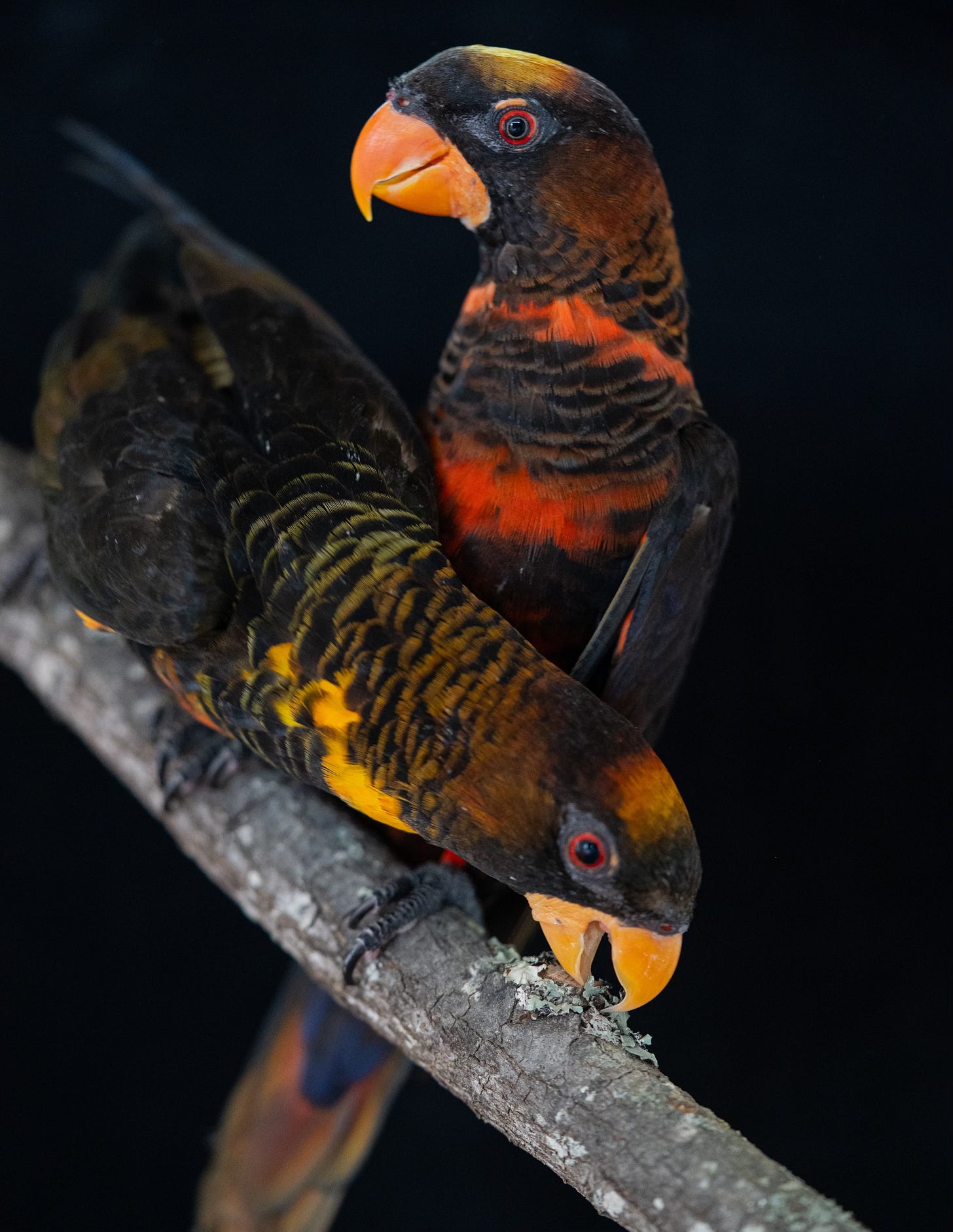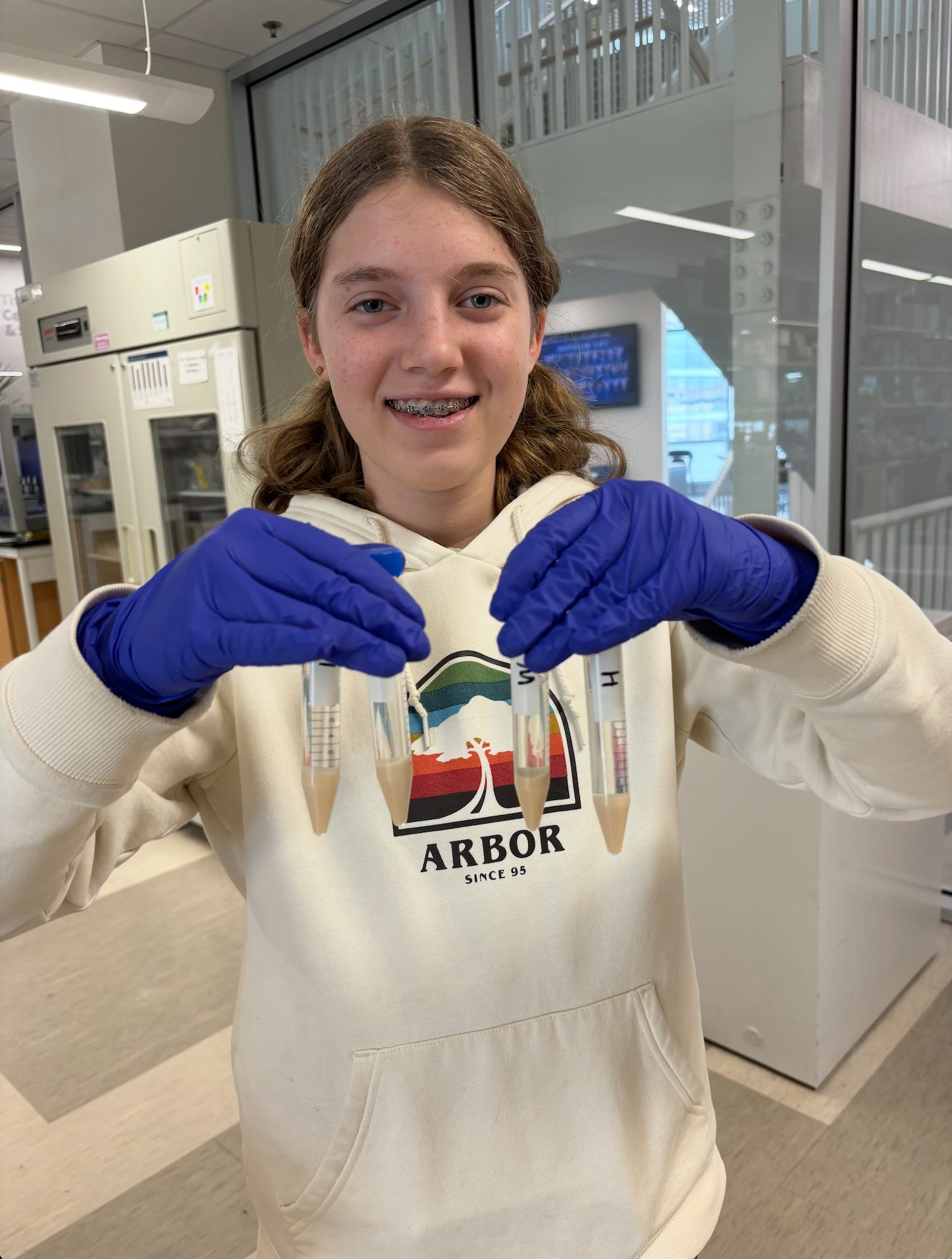Regulatory Evolution in the Wild
Evolution, genetics, single-cell genomics, biochemistry... this story of parrot pigments has it all.
One of the big findings of the past few decades of genomics is that animal species, despite their vast differences in morphology, physiology, and behavior, have more or less the same repertoire of genes. What really makes humans different from chimps or mice or whales is how a mostly common set of genes is regulated. In other words, evolution often innovates not by inventing new genetic parts, but rather by tuning the activity of those parts in different tissues.
This idea is widely accepted in biology, and the implication is that, to understand evolution at a molecular level, we need to learn how genetic changes in regulatory DNA elements lead to changes in cell physiology, which in turn change the organismal traits that affect fitness. But while it has proven fairly tractable to discover evidence that natural selection has acted on particular regulatory DNA elements, working out the mechanistic details that take you from sequence variants to an organismal trait is hard. Examples of this aren’t especially common.
I was fortunate to play a small part in a recent paper describing a new example of regulatory evolution, in a project led by my WashU colleague Joe Corbo and his long-time collaborators at the University of Porto, Miguel Carneiro and Pedro Miguel Araújo. Out in the Nov. 1 issue of Science, the paper describes a remarkably simple regulatory mechanism that controls the bright colors of parrot feathers.

I heard about this story in late 2022, when Joe told me that he and his collabortors had mapped a non-coding, single-nucleotide genetic variant that appeared to be responsible for the red and yellow morphs of the Dusky Lory, a parrot native to New Guinea. They had good reason to suspect that this variant was controlling the expression of something in feathers that was responsible for the red and yellow pigments of the Dusky Lory morphs. The Lory variant occurs in what looks like a regulatory DNA element that is active in the right cell type: it sits in an open chromatin region specific to the correct cell type, keratinocytes of regenerating feather follicles. (This was established with single-nucleus ATAC-seq in the feathers of budgerigars, a much easier to handle parrot species.) Moreover, this open chromatin region lies right at the end of a gene, ALDH3A2, which encodes an aldehyde dehydrogenase. This gene is conserved in eukaryotes and expressed in many cell types, but it had never been shown to play any sort of role in the synthesis of feather pigments.
Joe and his colleagues had a strong clue that ALDH3A2 might indeed be relevant. Aldehyde dehydrogenase enzymes like ALDH3A2 convert aldehydes to carboxylic acids. And it turns out that red and yellow feather pigments in parrots, called psittacofulvins, came in two chemical forms: a yellow carboxylic acid form and a red aldehyde form, a result that the research team established with Jindřich Brejcha, a chemist at Charles University in Prague. A mechanism was coming into view: the color difference between red and yellow Dusky Lories could be caused by a regulatory genetic variant that tuned the level of ALDH3A2 up (for yellow feathers) or down (for red feathers).
But did ALDH3A2 do the job? This is where I had fortunate opportunity to join the project, as a once-and-future yeast biologist. In a 2017 paper, Stanford biochemist Carlos Bustamente showed that you could introduce the pigment-making enzyme (called a polyketide synthase, or PKS), into yeast and get yellow psittacofulvins. It turns out that yeast have a homolog of ALDH3A2. We predicted that if we reconstructed psittacofulvin synthesis in a yeast strain lacking the ALDH3A2 homolog, the pigments would switch from yellow (carboxylic acid form) to red (aldehyde form).
That is exactly what happened. Lead author Roberto Arbore, a brilliant and hard-driving Italian scientist in Miguel Carneiro’s group, spent the summer of 2023 engineering yeast in my lab here in St. Louis. He showed that knocking out the yeast version of ALDH3A2 resulted in the aldehyde (red) form of psittacofulvins. When he introduced the Dusky Lory version of ALDH3A2 back into yeast, the psittacofulvins went back to the carboxylic acid (yellow) form.
There is much more to the story, and I encourage you to read the paper for the rest. (You can also listen to Joe and Roberto discuss the work on NPR.) But one theme stands out to me. It is remarkable how such phenotypic diversity is achieved by cell type-specific regulation of a ubiquitous enzyme. ALDH3A2 is a conserved gene, present not just in all animals but also in other eukaryotes like yeast. Mutations in this enzyme cause Sjögren-Larsson syndrome in humans, which is characterized by a range of neurological and skin phenotypes caused by a disruption in sphingolipid metabolism. This same enzyme metabolizes pigments into their yellow form in parrots. Across 50-80 million years of parrot evolutionary divergence, the team’s paper suggests, an enormous variety in the bright patterns of yellow, red, orange and green feather colors can be achieved by tuning the expression of a general purpose metabolic enzyme. It’s a clear example of how much of the creativity of evolution comes from simply reusing common genetic parts in new ways.
I can’t end without one more final credit. Over Thanksgiving break 2023, we ran another replicate of the yeast experiment, and I had some help in the lab from an eager young scientist.


